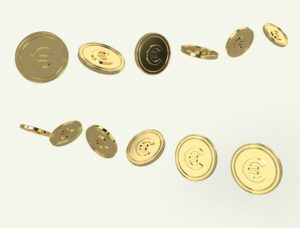The world of forex trading can be overwhelming for beginners. With so many different strategies, indicators, and trading time frames to choose from, it can be difficult to know where to start. In this article, we will discuss the best forex trading time frames for beginners.
Before diving into the different time frames, it is essential to understand what a time frame is in forex trading. A time frame refers to the duration in which a trader analyzes the price movement of a currency pair. The most common time frames used in forex trading are the following: 1 minute (M1), 5 minutes (M5), 15 minutes (M15), 30 minutes (M30), 1 hour (H1), 4 hours (H4), daily (D1), weekly (W1), and monthly (MN).
Each time frame has its advantages and disadvantages. Some traders prefer shorter time frames for quick trades, while others prefer longer time frames for more significant trends. For beginners, it is recommended to start with higher time frames as they provide a clearer picture of the market.
The daily time frame (D1) is one of the best time frames for beginners. It allows traders to see the overall trend of a currency pair and identify significant support and resistance levels. Since the daily time frame represents 24 hours of price movement, it filters out much of the market noise that can confuse beginners.
Trading on the daily time frame also provides more reliable signals. Since each candlestick represents a full day of trading, the signals generated on this time frame are more significant and have a higher probability of success. This is especially important for beginners who are still developing their trading skills and need to build confidence in their trades.
Another benefit of trading on the daily time frame is that it requires less time and effort. Unlike shorter time frames, traders do not need to constantly monitor the market throughout the day. With the daily time frame, traders can set their trades and check in on them once a day, making it suitable for those with busy schedules or part-time traders.
While the daily time frame is excellent for identifying long-term trends, it may not provide enough trading opportunities for some traders. In such cases, the 4-hour time frame (H4) can be a good alternative. The 4-hour time frame still provides a clear view of the market while offering more frequent trading opportunities.
The 4-hour time frame allows traders to capture shorter-term trends within the context of the larger daily trend. It is also a good time frame for swing trading, where traders aim to capture medium-term price movements. Swing trading on the 4-hour time frame allows traders to enter trades with a favorable risk-to-reward ratio and hold positions for several days or even weeks.
For beginners who prefer even shorter time frames, the 1-hour time frame (H1) can be suitable. The 1-hour time frame provides more trading opportunities than the daily and 4-hour time frames but still allows traders to see the overall trend. It is a good time frame for day trading, where traders aim to capture intraday price movements.
However, it is important to note that trading on shorter time frames requires more active monitoring and can be more stressful for beginners. The shorter the time frame, the more market noise and false signals there may be. Beginners should be cautious when trading on shorter time frames and ensure they have a solid trading plan in place.
In conclusion, the best forex trading time frames for beginners are the daily (D1), 4-hour (H4), and 1-hour (H1) time frames. These time frames provide a clear view of the market while offering different trading opportunities based on the trader’s preferences. Beginners should start with higher time frames to develop their trading skills and build confidence in their trades. As they gain experience and knowledge, they can explore shorter time frames if desired.






